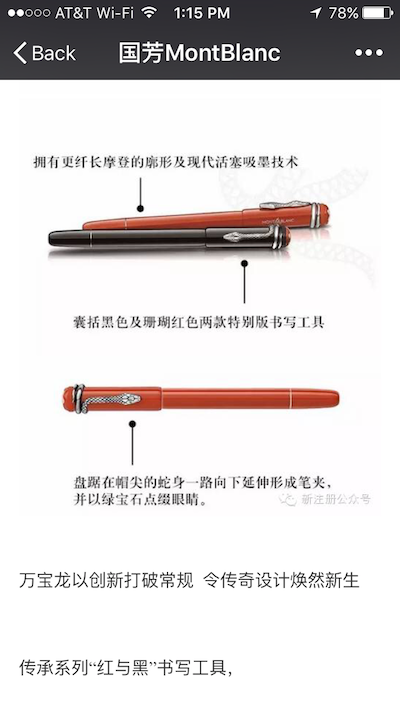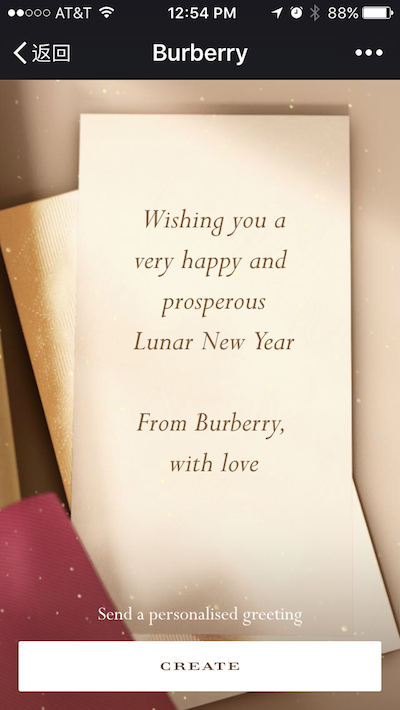 Michael Kors WeChat platform
Michael Kors WeChat platform
Luxury brands are not taking advantage of WeChat’s direct marketing capabilities, according to a new report by L2.
Brands in the fashion and watches and jewelry categories receive an average of 7,000 views per WeChat post, a pittance against the 700 million monthly users. Rather than using WeChat in ways similar to Instagram, Facebook and Twitter, brands should take advantage of its one-to-one communication interface for CRM purposes, to encourage loyalty or drive online-to-offline activity.
"Cost has been the main prohibitive factor in WeChat advertising, with WeChat Moment ads originally costing 200,000RMB ($30,800)," said Ariane Turley, Research Associate at L2. "With few brands adopting advertising, WeChat was forced to lower the price to 50,00RMB ($7,700) in January 2016.
"Aside from costs, the question of the effectiveness is still up in the air -- even with advertising, it's not clear if brands are achieving greater scale on the platform," she said.
"Luxury China: WeChat" examines the performance of more than 100 luxury brands on WeChat and Weibo and offers tips to improve performance on WeChat.
Weibo vs. WeChat
Luxury fashion brands average a fan base of more than 290,000 followers on Weibo and 160 likes per seven weekly posts, compared to just 35 likes on 1.5 weekly posts on WeChat.
For watch and jewelry brand the same pattern holds, though accessible luxury performs much better on WeChat than on Weibo, especially compared to pure luxury brands.
 Montblanc Rouge et Noir WeChat
Weibo is therefore more suitable for low-cost, mass communication, while WeChat offers opportunities to engage with consumers on an individual basis. However, L2 also characterizes Weibo as a platform in decline and suggests brands find ways to funnel those larger followings to WeChat and other brand channels.
The advantage watch and jewelry brands are displaying over fashion brands is likely related to the use of the manual reply feature on WeChat, which allows a consumer to chat directly with a customer service representative. Forty-four percent of watch and jewelry brands employ the feature, compared to just 13 percent of fashion brands.
Brands are also not leveraging WeChat payment or coupons, and while loyalty program integration is growing fast, rates are still low.
These features rely on a direct, one-to-one communication channel that sets WeChat apart from other social channels. Brands should harness that natural potential rather than mold it into the frame of competing outlets.
Also noted, WeChat has recently cut its advertising cost by 75 percent. The network has not been able to pick up the kind of steam for advertising that Facebook and, more recently Instagram have, but the shrunken price tag represents a chance to win over new consumers.
Montblanc Rouge et Noir WeChat
Weibo is therefore more suitable for low-cost, mass communication, while WeChat offers opportunities to engage with consumers on an individual basis. However, L2 also characterizes Weibo as a platform in decline and suggests brands find ways to funnel those larger followings to WeChat and other brand channels.
The advantage watch and jewelry brands are displaying over fashion brands is likely related to the use of the manual reply feature on WeChat, which allows a consumer to chat directly with a customer service representative. Forty-four percent of watch and jewelry brands employ the feature, compared to just 13 percent of fashion brands.
Brands are also not leveraging WeChat payment or coupons, and while loyalty program integration is growing fast, rates are still low.
These features rely on a direct, one-to-one communication channel that sets WeChat apart from other social channels. Brands should harness that natural potential rather than mold it into the frame of competing outlets.
Also noted, WeChat has recently cut its advertising cost by 75 percent. The network has not been able to pick up the kind of steam for advertising that Facebook and, more recently Instagram have, but the shrunken price tag represents a chance to win over new consumers.
 Burberry Lunar New Year WeChat
Advertising would be the first step in visibility among numerous users. Combined with the aforementioned array of features aimed directly at personal interaction, however, it also allows a brand to show off levels of customer service that can be difficult to translate online.
A face in the crowd
China’s burgeoning middle and upper classes comprise a vast percentage of worldwide growth potential in the personal luxury goods market. Accordingly, recent months have seen some brands get more adventurous on WeChat.
U.S. apparel label Michael Kors made shopping more personalized for its consumers in Asia with a CRM experience housed on WeChat.
Designed to merge the online and offline, the tool offers digital customer service touchpoints to be used both at home and in-store and offers benefits to members to spur bricks-and-mortar visits. Not only will this platform assist Michael Kors in delivering a customized experience to its consumers, but it will also enable the brand to learn more about its most engaged clients (see story).
With China’s large audience leading to its status as the key market for brands attempting to grow, personalized communication that leverages WeChat’s innate traits can help a brand stand out during heavy shopping periods.
For example, British fashion house Burberry opted for personalization on WeChat to involve Chinese consumers in its Lunar New Year promotions.
Lunar New Year, celebrated by Chinese consumers around the world this year on Feb. 8, allowed Burberry to curate an effort exclusively for its Chinese clients, thus creating a personalized and localized connection. WeChat offers brands an in with Chinese consumers around the world since the app is the go-to form of communication between shoppers, brands and peers (see story).
Burberry Lunar New Year WeChat
Advertising would be the first step in visibility among numerous users. Combined with the aforementioned array of features aimed directly at personal interaction, however, it also allows a brand to show off levels of customer service that can be difficult to translate online.
A face in the crowd
China’s burgeoning middle and upper classes comprise a vast percentage of worldwide growth potential in the personal luxury goods market. Accordingly, recent months have seen some brands get more adventurous on WeChat.
U.S. apparel label Michael Kors made shopping more personalized for its consumers in Asia with a CRM experience housed on WeChat.
Designed to merge the online and offline, the tool offers digital customer service touchpoints to be used both at home and in-store and offers benefits to members to spur bricks-and-mortar visits. Not only will this platform assist Michael Kors in delivering a customized experience to its consumers, but it will also enable the brand to learn more about its most engaged clients (see story).
With China’s large audience leading to its status as the key market for brands attempting to grow, personalized communication that leverages WeChat’s innate traits can help a brand stand out during heavy shopping periods.
For example, British fashion house Burberry opted for personalization on WeChat to involve Chinese consumers in its Lunar New Year promotions.
Lunar New Year, celebrated by Chinese consumers around the world this year on Feb. 8, allowed Burberry to curate an effort exclusively for its Chinese clients, thus creating a personalized and localized connection. WeChat offers brands an in with Chinese consumers around the world since the app is the go-to form of communication between shoppers, brands and peers (see story).
